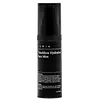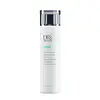What's inside
What's inside
 Key Ingredients
Key Ingredients

 Benefits
Benefits

 Concerns
Concerns

 Ingredients Side-by-side
Ingredients Side-by-side

Water
Skin ConditioningDipropylene Glycol
HumectantButylene Glycol
HumectantChlorphenesin
AntimicrobialPEG-60 Hydrogenated Castor Oil
EmulsifyingTrehalose
HumectantHamamelis Virginiana Leaf Extract
Skin ConditioningAmmonium Acryloyldimethyltaurate/Vp Copolymer
Glycyrrhiza Glabra Root Extract
BleachingZingiber Officinale Root Extract
MaskingSchisandra Chinensis Fruit Extract
Skin ConditioningCoptis Japonica Root Extract
Skin ConditioningCamellia Sinensis Leaf Extract
AntimicrobialGlycerin
HumectantDisodium EDTA
Sodium Citrate
BufferingAllantoin
Skin ConditioningPhenoxyethanol
PreservativePropolis Wax
EmollientCaprylyl Glycol
EmollientCucumis Sativus Fruit Extract
EmollientXylitylglucoside
HumectantAnhydroxylitol
HumectantXylitol
HumectantGlucose
HumectantRosa Canina Fruit Oil
EmollientAsiaticoside
AntioxidantEthylhexylglycerin
Skin ConditioningParfum
MaskingWater, Dipropylene Glycol, Butylene Glycol, Chlorphenesin, PEG-60 Hydrogenated Castor Oil, Trehalose, Hamamelis Virginiana Leaf Extract, Ammonium Acryloyldimethyltaurate/Vp Copolymer, Glycyrrhiza Glabra Root Extract, Zingiber Officinale Root Extract, Schisandra Chinensis Fruit Extract, Coptis Japonica Root Extract, Camellia Sinensis Leaf Extract, Glycerin, Disodium EDTA, Sodium Citrate, Allantoin, Phenoxyethanol, Propolis Wax, Caprylyl Glycol, Cucumis Sativus Fruit Extract, Xylitylglucoside, Anhydroxylitol, Xylitol, Glucose, Rosa Canina Fruit Oil, Asiaticoside, Ethylhexylglycerin, Parfum
Water
Skin ConditioningButylene Glycol
HumectantGlycerin
HumectantSorbitol
HumectantSodium Lactate
BufferingSodium PCA
HumectantXanthan Gum
EmulsifyingPanthenol
Skin ConditioningAloe Barbadensis Leaf Juice
Skin ConditioningEthylhexylglycerin
Skin ConditioningSodium Hyaluronate
HumectantSodium Carboxymethyl Beta-Glucan
CleansingSodium Polyglutamate
HumectantAesculus Hippocastanum Seed Extract
Skin ConditioningChamomilla Recutita Flower Extract
MaskingCucumis Sativus Fruit Extract
EmollientGlycyrrhiza Glabra Root Extract
BleachingPhenoxyethanol
PreservativeChlorphenesin
AntimicrobialBenzoic Acid
MaskingPotassium Sorbate
PreservativeSodium Benzoate
MaskingWater, Butylene Glycol, Glycerin, Sorbitol, Sodium Lactate, Sodium PCA, Xanthan Gum, Panthenol, Aloe Barbadensis Leaf Juice, Ethylhexylglycerin, Sodium Hyaluronate, Sodium Carboxymethyl Beta-Glucan, Sodium Polyglutamate, Aesculus Hippocastanum Seed Extract, Chamomilla Recutita Flower Extract, Cucumis Sativus Fruit Extract, Glycyrrhiza Glabra Root Extract, Phenoxyethanol, Chlorphenesin, Benzoic Acid, Potassium Sorbate, Sodium Benzoate
Ingredients Explained
These ingredients are found in both products.
Ingredients higher up in an ingredient list are typically present in a larger amount.
Butylene Glycol (or BG) is used within cosmetic products for a few different reasons:
Overall, Butylene Glycol is a safe and well-rounded ingredient that works well with other ingredients.
Though this ingredient works well with most skin types, some people with sensitive skin may experience a reaction such as allergic rashes, closed comedones, or itchiness.
Learn more about Butylene GlycolChlorphenesin is a synthetic preservative. It helps protect a product against bacteria in order to extend shelf life. In most cases, Chlorphenesin is paired with other preservatives such as phenoxyethanol and caprylyl glycol.
Chlorphenesin is a biocide. This means it is able to help fight the microorganisms on our skin. It is also able to fight odor-releasing bacteria.
Chlorphenesin is soluble in both water and glycerin.
Studies show Chlorphenesin is easily absorbed by our skin. You should speak with a skincare professional if you have concerns about using Chlorphenesin.
Learn more about ChlorphenesinThis extract comes from cucumber. Cucumbers are mostly made up of water (95%), and the other 5% is composed of: vitamin C, caffeic acid, fatty acids, amino acids, and other minerals.
Cucumbers have anti-inflammatory, barrier repair, and hydrating properties.
They contain shikimate dehydrigenase, an enzyme shown to help reduce inflammation and soothe the skin.
The amino acids found in cucumbers help nourish our skin's natural acid mantle (it's an important part of our skin barrier). This slightly acidic film acts as a barrier to protect us from bacteria, viruses, and other contaminants.
Unless you have an allergy to cucumbers, this is generally a non-irritating ingredient.
Fun fact: Cucumis Sativus is native to South Asia and can now be found on every continent.
Learn more about Cucumis Sativus Fruit ExtractEthylhexylglycerin (we can't pronounce this either) is commonly used as a preservative and skin softener. It is derived from glyceryl.
You might see Ethylhexylglycerin often paired with other preservatives such as phenoxyethanol. Ethylhexylglycerin has been found to increase the effectiveness of these other preservatives.
Glycerin is already naturally found in your skin. It helps moisturize and protect your skin.
A study from 2016 found glycerin to be more effective as a humectant than AHAs and hyaluronic acid.
As a humectant, it helps the skin stay hydrated by pulling moisture to your skin. The low molecular weight of glycerin allows it to pull moisture into the deeper layers of your skin.
Hydrated skin improves your skin barrier; Your skin barrier helps protect against irritants and bacteria.
Glycerin has also been found to have antimicrobial and antiviral properties. Due to these properties, glycerin is often used in wound and burn treatments.
In cosmetics, glycerin is usually derived from plants such as soybean or palm. However, it can also be sourced from animals, such as tallow or animal fat.
This ingredient is organic, colorless, odorless, and non-toxic.
Glycerin is the name for this ingredient in American English. British English uses Glycerol/Glycerine.
Learn more about GlycerinGlycyrrhiza Glabra Root Extract is an extract of the roots of Licorice. It has been found to have several benefits such as skin hydrating, conditioning, and soothing.
One component, glabridin, has extra potent antioxidant and soothing properties. It has also been found to block pigmentation from UVB rays in guinea pigs.
Licorice Root also contains a flavonoid. Flavonoids are a natural substance from in plants. Flavonoids also have antioxidant properties.
Another component, glycyrrhizin, has been found to have anti-inflammatory and antimicrobial benefits. This may make licorice root extract effective at treating acne. However, more research is needed to support this.
Liquiritin is one of the flavone compounds found in licorice. It has been found to help lighten skin by preventing tyrosinase from reacting with tyrosine. When the two react, protein is converted to melanin. Melanin is the substance in your body that gives your features pigmentation.
Learn more about Glycyrrhiza Glabra Root ExtractPhenoxyethanol is a preservative that has germicide, antimicrobial, and aromatic properties. Studies show that phenoxyethanol can prevent microbial growth. By itself, it has a scent that is similar to that of a rose.
It's often used in formulations along with Caprylyl Glycol to preserve the shelf life of products.
Water. It's the most common cosmetic ingredient of all. You'll usually see it at the top of ingredient lists, meaning that it makes up the largest part of the product.
So why is it so popular? Water most often acts as a solvent - this means that it helps dissolve other ingredients into the formulation.
You'll also recognize water as that liquid we all need to stay alive. If you see this, drink a glass of water. Stay hydrated!
Learn more about Water